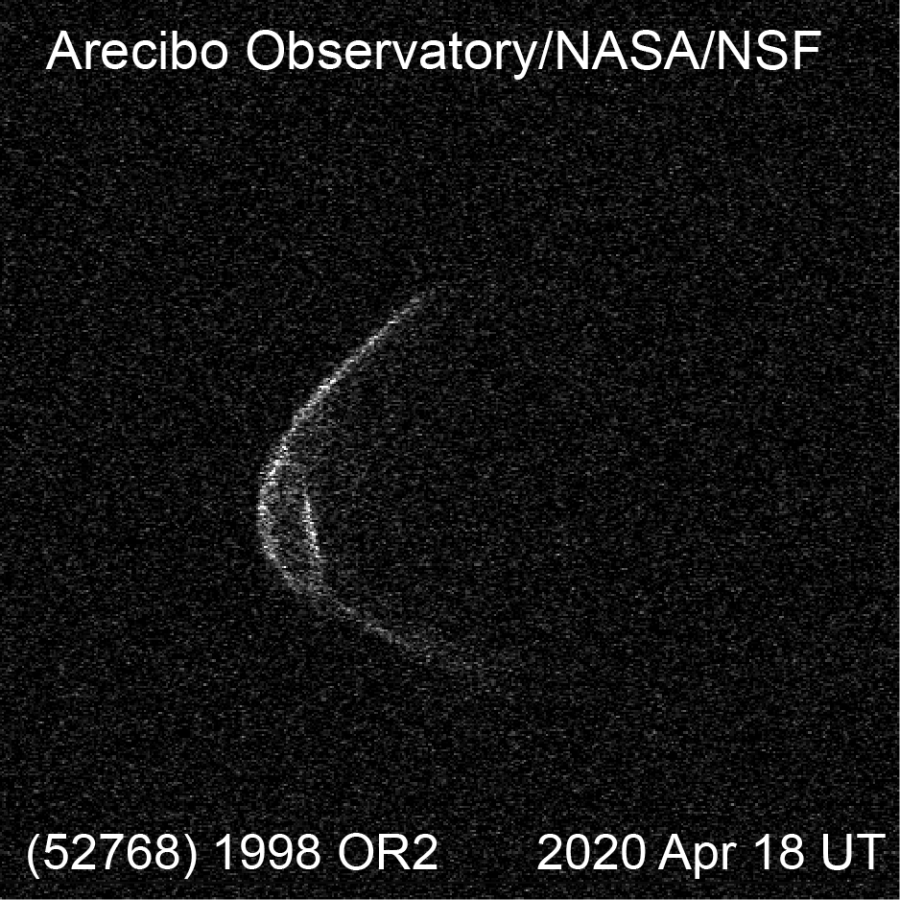Large asteroid will pass by Earth on April 29
Asteroid 1998 OR2 as imaged by the Arecibo Radar on April 18, 2020.
Asteroid 1998 OR2 is thought to be between 1.1 miles long and 2.5 miles wide and will be seen from Earth on the night of April 29. It will be traveling around 19,461 miles per hour at a distance of roughly four million miles away from Earth. NASA has classified this specific asteroid in the Amor category of NEO’s. An Amor asteroid has an orbit that circles around the orbit of the Earth. Unlike its counterparts, Apollo and Atens asteroids, an Amor asteroid’s orbit does not cross paths with Earth. Considering the fact that 1998 OR2 is going to pass by at a distance roughly 493 times the diameter of the Earth, it does not pose a major threat to the planet.
Both amatuer and experienced astronomers will have their eyes turned to the night sky and an asteroid this close makes people wonder; could one ever hit Earth? NASA has developed a plan for the unlikely event that an asteroid ever will. NASA’s Double Asteroid Reduction Test, or DART, involves the use of a rocket that will collide with two asteroids. The project is only in the test phase, but it would launch a small rocket propelled craft, about the size and shape of a refrigerator, to an asteroid in similar composition of one that could destroy Earth. The asteroids NASA has chosen to collide with are Didymos A and B on July 22, 2021. If it works, NASA would have the ability to eliminate all threats because it will not only break up the asteroid, but it will also throw off its flight path.
If a large asteroid ever did hit Earth, the impact would be catastrophic. An asteroid with a length of one mile in diameter would deliver the same energy as that of 10 million Hiroshima bombs. In a blast radius of 200 miles from ground zero, where the asteroid hit, everything would be completely flattened. At a maximum range of 1,000 miles, large buildings would be damaged and weak structures potentially destroyed. The blast would also send tons of Earth and debris up into the sky that would block out all sunlight for long periods of time. This would create a cascade effect as plants die. If an asteroid hit an ocean, huge tsunamis would hit all coastlines near the affected ocean. Coastal towns would be wiped out as waves come crashing down and then recede back into the sea destroying all life and most of the infrastructure. The asteroid that potentially wiped out all of the dinosaurs was roughly six to nine miles wide. This goes to show how little of a threat this new asteroid is, especially since it will not travel anywhere close to Earth and will only be visible in the night sky.
NASA guarantees that Earth is in no immediate peril from this asteroid, thus on April 29, 2020, look up into the sky and witness an asteroid that, fortunately, will not collide with Earth.










